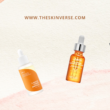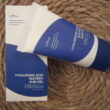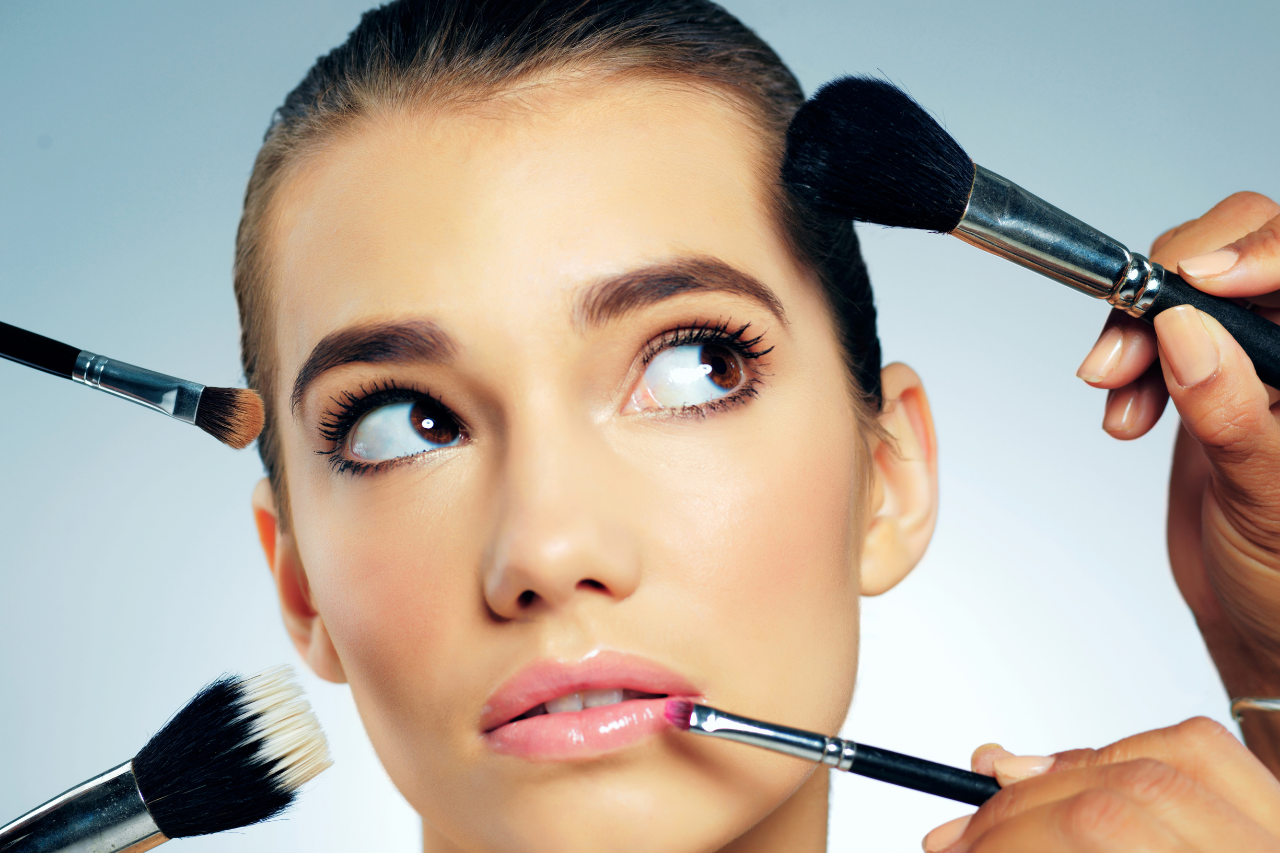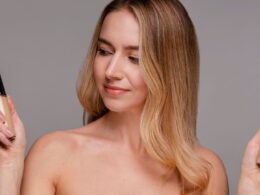Finding the right foundation to lay makeup on is one of the fundamentals for your glowing look. And your choice of foundation is literally the foundation that is responsible for creating the effect of “perfect skin”. This is the only guide you will need on finding the right foundation for your skin.
But before we do that, let’s talk about what types of foundations are out there.
Types of foundations
#1. Cream foundation
Most often they are used by professional MUAs for photoshoots or videos, for evening outings, or in order to hide some obvious imperfections (strong age spots, wrinkles, redness).
These types of foundations provide good coverage for pigmented skin and they are great for dry skin as they tend to hydrate the skin. However, cream foundations are definitely a no-no if you have oily skin. At the same time, they can crease easily in a rather humid climate.
#2. Liquid foundation
Liquid foundation is one of the most versatile types of foundation – easy to blend, perfectly merging with the skin. This is a so-called modern beauty classic that suits almost all skin types.
They are medium to full coverage and can be built up depending on the look you want to create. The only downside to a liquid foundation is that it can easily oxidize and change color on the skin.
#3. Stick foundation
Stick foundation is perhaps the easiest to use, and they are very travel-friendly. You can also swap them for a concealer. They have a creamy texture that is easy to layer and blend with a sponge, brush, and fingertips. Stick foundations can be a bit thicker, but they are suitable for all skin types and for everyday makeup.
#4. Powder foundation
You can find powder foundations in a compact pressed powder form at the store. If you have oily or oily to combination skin, powder foundation is a perfect match for you. They are usually lightweight, they will soak up all the excess oil so they won’t feel heavy on your skin.
You will probably think that it can be drying on the skin since it is in powder form. This is usually not the case with oily skin, however, if your skin tends to develop dry patches, make sure your skin is hydrated all the way before applying the powder foundation.
Also, don’t forget that powder foundations are mineral-based, meaning that it is great for sensitive skin and it won’t be irritating. As for the coverage, they are not the full coverage when compared to a cream foundation for example.
#5. Mousse foundation
It is a mix of cream and liquid foundations with a mousse-like, thick (no surprise there) consistency. Don’t let this scare you though – it is very lightweight. Mousse foundations are sometimes referred to as “whipped” foundations.
Think of it as a liquid foundation with air whipped in – that’s the main reason why they are lightweight. Mousse foundations provide full coverage, they are suitable for all skin types. They especially work well with oily skin because they have a matte finish.
Since they have the mousse-like formula, it is very important to blend them into the skin really well, so it won’t look patchy or cakey throughout the day.
6. Serum foundations
Serum foundations are a relatively recent concept in the skincare realm. It is for those who want to nourish their skin while making their skin look flawless. I mean, isn’t it all of us?
Serum foundations are for you if you like multitasking – they give your skin a buildable coverage and that much-needed hydration boost at the same time.
They are in the moderate coverage area by providing a natural look with a semi-matte finish. If you have dry, dehydrated skin, this is a godsend product.
How to choose the right foundation for your skin type?

#Skin type: Oily
If you have oily skin, mineral foundations (powder foundations for instance) or foundations with a matte finish are ideal. You should avoid “heavy” products in every possible way, thicker formulas will cause the skin to produce even more sebum.
In order for the product to work properly on oily skin, it must be well absorbed without leaving an oily sheen. The right foundation for your skin type is a lightweight texture that does not clog pores.
At the same time, choose the right foundation that cares for the skin, maintaining the necessary level of moisture throughout the day.
#Skin type: Dry
It can take a bit more effort to prep dry skin, but it is worth the effort! Before applying any foundation, you need to moisturize the skin well with a cream or a serum. The base of the product you will be using should be creamy – it will provide good coverage, stick to the skin, and will also provide additional hydration throughout the day.
Cream Foundations and serum foundations would be the best match for dry skin. Serum foundations, in particular, have moisturizing components that are able to actively fight not only dryness but also wrinkles and fine lines. They help create a barrier on the skin, giving the face a glowy and even tone.
More about moisturizing: Choosing The Right Moisturizer: A Detailed Guide
#Skin type: Combination
It is truly stuck in the worst of two worlds situation when it comes to choosing a foundation for combination skin. If the skin tends to be oily in only some areas, avoid formulas that are heavy and oily.
Try mixing several formulas for the best effect: use lighter formulas (powder foundations, mousse foundations) in oily zones, more hydrating foundations (serum foundations, cream foundations) in dry places.
#Skin type: Sensitive
Number one rule for sensitive skin: DO NOT buy products that contain alcohol and fragrances. Try to avoid ingredients such as talc that can irritate sensitive skin.
The right foundation for you would be mineral foundations that contain (yes, you guessed it) minerals. They are great for sensitive skin as they won’t clog your pores.
Having sensitive skin does have its own drawbacks and the most important thing is about finding the right foundation routine so you can stick to it.
How to choose the right foundation shade that matches your complexion?
How do you find the right foundation shade to match your complexion perfectly you ask? One of the quickest ways is to apply a small amount of the product on the palm of your hand, then you can try your favorite foundation on the lower part of the cheekbones.
This way you will determine which color suits you best. Don’t be afraid to mix a few shades – it’s much worse when the foundation color is lighter than your actual complexion.
How to choose the right foundation shade?

If the skin has a yellowish tint, “warm” shades of the foundation are more suitable for you. A pinkish skin tone means that it is better to give preference to makeup with a “cold” shade.
Determining your own shade will make choosing a foundation a lot easier. How do find your skin undertone? There are some tests you can do:
The veins test
Look at the color of the veins in your forearm or wrist. It is important that you do it under the light so you can easily see.
- Green veins: Your sub-tone is warm. (yellow, golden, coppery)
- Blue or purple veins: Your sub-tone is cold (red,blue pink)
- If it is somewhere in between: Your sub-tone of your skin is neutral.
If you are still not sure, you can do another test:
The jewelry test
In simple words, if you look pale with golden jewelry, you have a cool undertone. Because gold looks more flattering with warm undertones. And, you guessed it, silver would look more flattering on you if you are cool-toned.
The tan test
You can do a simple tan test too! Just think about summer and how your skin reacts to sun exposure. Are you one of those people who can tan easily in summer? Then you are warm-toned.
If you are unable to tan well and struggle with sunburns all the time just like me, then you have a cool undertone. Hope it makes more sense now so you can now have all the information to find the right foundation 🙂
What is the foundation finish you need?
What is a finish and how should it look on your face? This is the result you would like to achieve after applying your foundation.
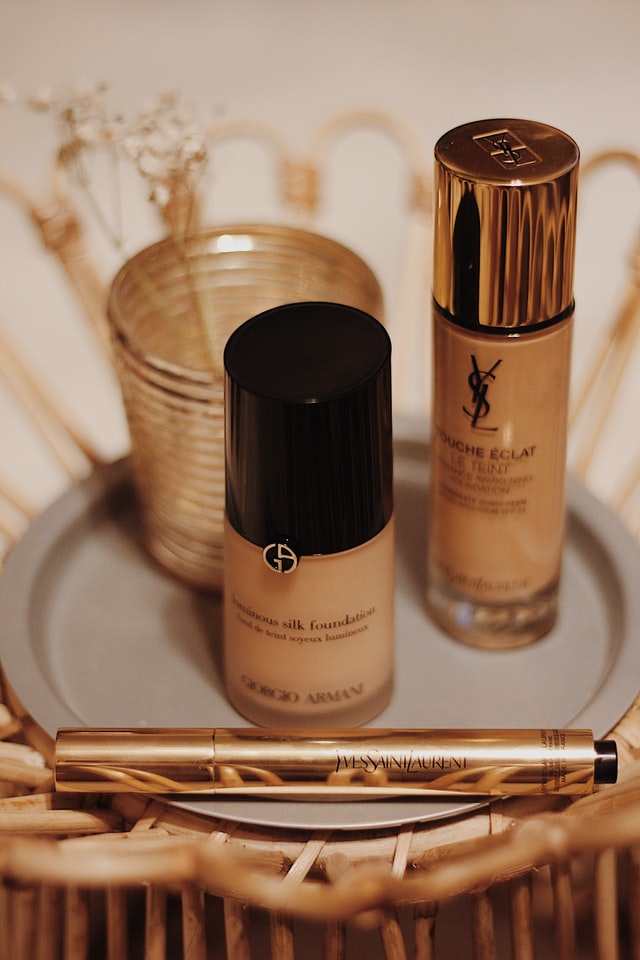
Generally, there are three types of finish for foundation:
- satin;
- matte;
- cream.
A matte finish is the aim of any makeup in general. And the right foundation will mostly achieve that. Most often, it is due to the fact that it creates an even skin tone, does not leave an oily sheen. In addition, which it is perfectly absorbed.
On the contrary, a creamy finish helps prevent dry skin. It is easy to apply, and thanks to certain make-up techniques, you can achieve a beautiful radiance and iridescence on the face.
Satin finish for foundations is the golden standard. It is perfect for the combination type, as well as for those who want to achieve a “shiny surface” effect. Satin finish foundations can also be matched to skin color – it will look especially beautiful on a tanned face.
How to apply foundation in general?
Once you find the right foundation + right foundation shade for your skin, it is time to talk about application! Mainly, foundation sponges and brushes.
These applicators are a must-have for any makeup bag, especially for those who are not yet very good at makeup skills.
#1. Step: But first, you need to prep your skin. Most of the time foundations get a bad rap for being too cakey, or heavy. The truth is the wrong prep that sets the foundation for failure in the first place. As long as you properly moisturize your skin and prep it for foundation, you are good to go.
#2. Step: After cleansing your face apply a thin layer of your go-to moisturizer or primer. Let the product sink in for 5-10 minutes so it will make sure that the foundation sticks to the face. Take around 2 pumps (or more if you need) of the product and start applying it with your foundation brush.
#3. Step: Start at the center of your face and try to blend it in an outward motion.
See, most people will apply a powder and finish off their look. I, however, believe in the magic of using a beauty sponge.
#4. Step: Gently damp your makeup sponge (make sure there is no excess water, squeeze it out) and dab it slowly on the parts of your face. Dab, dab, dab, and voila, you have got the perfectly blended foundation. Don’t smear the foundation on your face with the sponge, just use one side of the sponge to dab.
The final take
Using a concealer or a powder is completely up to you – if you want to cover any acne, zits, or scars, then go ahead. Considering the types of foundations while doing so can make a huge difference!
Remember that a properly selected make-up product is invisible to others. And so is your foundation.
This is how the “perfect skin” effect is created even though, well, perfection doesn’t exist. However, finding the right foundation can make all the difference. I would call it nearly perfect skin 🙂



